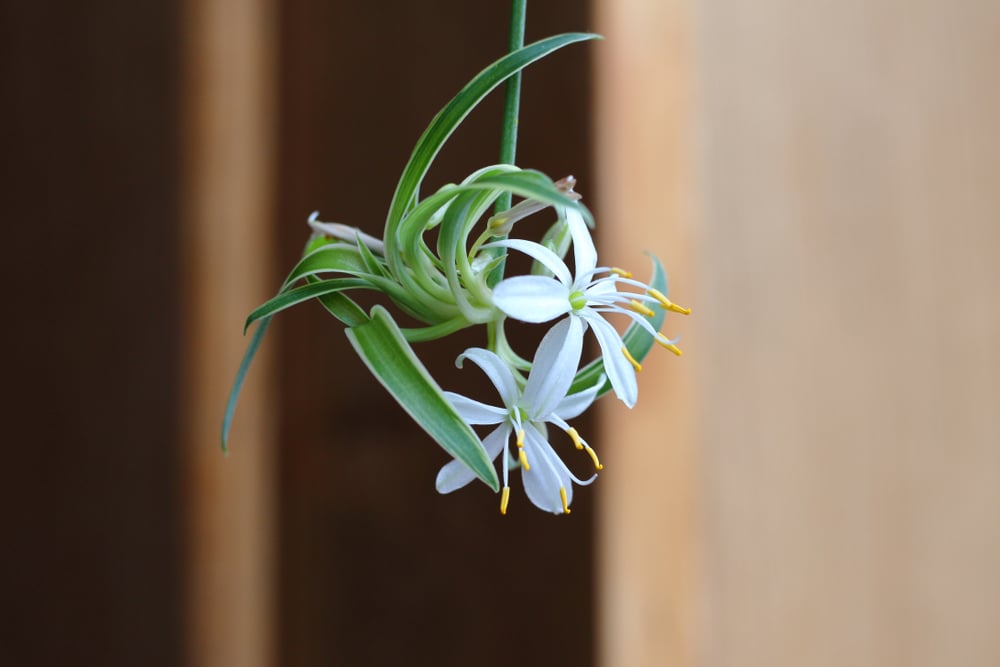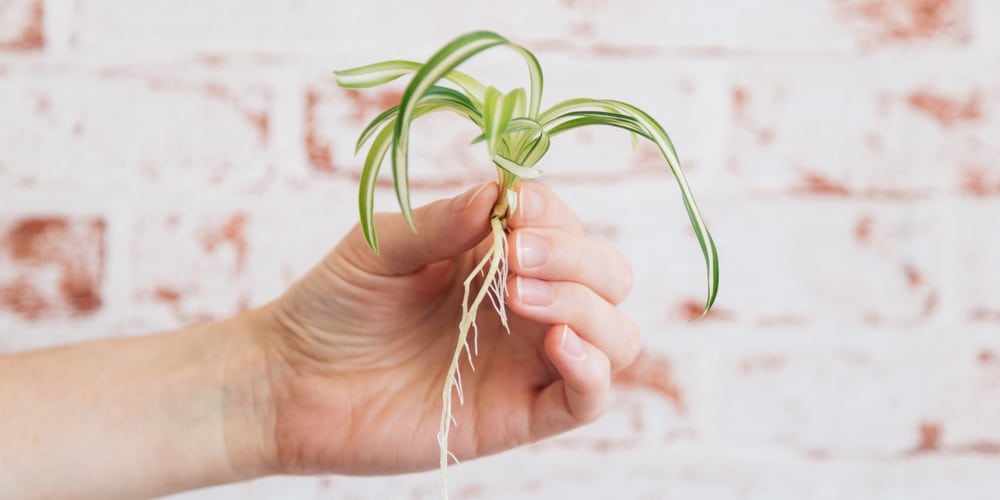Spider plants are versatile species that people grow in both soil and water. They even have a high tolerance for neglect. So, it might get you wondering—can a spider plant grow in a fish tank?
Yes, it can. As long as you only submerge the roots of a spider plant in a fish tank and not the whole plant, it can often—but not always—thrive in an aquatic environment.
The Benefits of Growing Spider Plants in a Fish Tank

There are several advantages of planking spider plants in a fish tank, especially if you have fish in the aquarium, versus using the tank as a vase.
Some of the most significant benefits your spider plant will receive by growing in a fish tank include:
- Fish droppings are a natural fertilizer
- No temperature fluctuations
- Light and aeration from the tank
Furthermore, spider plants can give a fish tank a unique look. The roots will grow into the water, giving your fish a place to hide. It also adds character to the top of a tank.
The benefits here primarily are for freshwater tropical fish aquariums, as they have heaters, tank lights, and aeration systems. Spider plants don’t do well in temperatures below 50 degrees Fahrenheit, so they’ll appreciate having warm water.
You can still try growing a spider plant in a smaller goldfish-like bowl, but it might die without these systems. That’s especially the case for oxygen, as carbon dioxide levels might increase in the water by placing spider plants in a tank without other living plants or aeration.
The Downsides To Growing Spider Plants in a Fish Tank
Although spider plants can grow in a fish tank, it isn’t a guarantee that these plants will thrive. That’s because spider plants usually grow in soil.
So, below are some of the disadvantages of trying to grow spider plants in an aquarium:
- Will likely die without lighting and aeration system
- Dead leaves fall into the water
Some people design a tray to catch a spider plant’s leaves before they make their way into the water, creating more debris for the filter to process.
Submerging Spider Plants
Spider plants are terrestrial. Therefore, you should never bury a spider plant into the substrate of a fish tank.
Doing so will drown the plant, causing it to rot. The implications of this can be severe, as it’ll force your tank’s filter to go into overdrive, potentially straining it as it removes the debris.
It’s also essential to monitor the leaves of your spider plant that float on top of the tank. They often won’t rot on a healthy plant, but they’ll naturally fall off. By staying on top of this routine leaf shedding, you’ll be able to prevent your filter from becoming clogged, keeping your fish and plant in tip-top shape.
A Note on Pesticides
Knowing the origin of your spider plant before putting it into a tank with other fish is vital. If the plant has pesticides on it, this could have detrimental implications for the fish in your tank.
So, when in doubt, it’s best to forgo putting a spider plant in your fish tank and use aquatic plants made for aquariums. Many people also use Pothos to filter their aquarium water.
The Bottom Line
It’s possible to grow spider plants in fish tanks. But the success of the plant’s growth depends on the tank having an aerator to infuse the water with oxygen, fish droppings for fertilizer, a tank lamp, and a heater.
